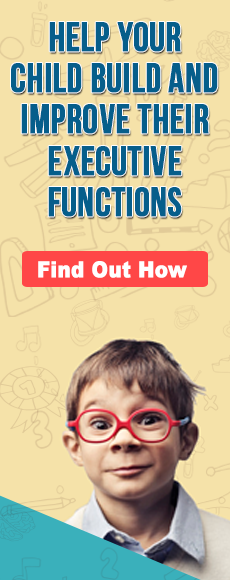Overview
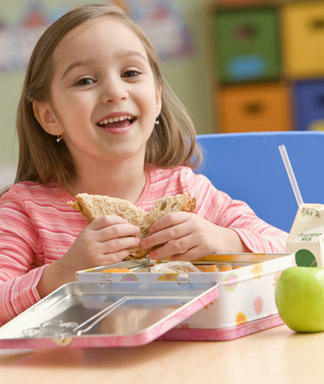 This Thinking Skill focuses on a student’s ability to judge her own performance and behavior, and to respond appropriately in different social situations. For example, a student would be successfully using his Self-Awareness skills when working in a group if he were to recognize he had started working without listening to all of the group members ideas, thus taking a step back to do so. Self-Awareness is a Thinking Skill that is composed of two separate, but closely related executive functions: Metacognition and Social Thinking.
This Thinking Skill focuses on a student’s ability to judge her own performance and behavior, and to respond appropriately in different social situations. For example, a student would be successfully using his Self-Awareness skills when working in a group if he were to recognize he had started working without listening to all of the group members ideas, thus taking a step back to do so. Self-Awareness is a Thinking Skill that is composed of two separate, but closely related executive functions: Metacognition and Social Thinking.
Students use Self-Awareness skills in a variety of academic contexts. They use it when they monitor their own comprhension as they read. They use it when they ask clarifying questions to make sure they understand something new they are learning. They also use it in a variety of social contexts, like working with peers on a project, sharing ideas during a debate, and supporting their opinions with evidence from what they have learned.
Click here for more Self-Awareness Fundamentals
Self-Awareness Skills in the Classroom
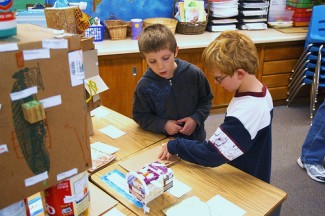 Using effective Self-Awareness skills can help students tackle a variety of classroom challenges. The following list outlines some common classroom situations that require the use of Self-Awareness skills:
Using effective Self-Awareness skills can help students tackle a variety of classroom challenges. The following list outlines some common classroom situations that require the use of Self-Awareness skills:
- Understanding one’s own strengths and areas for growth: It takes self-awareness skills for students to evaluate their own strengths and focus areas for growth in a given subject area, on a particular assignment, or in an extracurricular activity. Many students need guidance on how to accurately evaluate their own performance on a task and to set goals for growth in the future.
- Maintaining positive relationships with peers: In order to form good peer relationships, students need to be aware of how their own behaviors impact others and understand what makes their peers happy or upset. Students need to be aware of the appropirate tone of voice and body language to use in different situations at school.
- Editing and revising written work: Students need to use self-awareness skills to revise the content of their writing to make sure their ideas are clearly stated for the reader. They also need to be reflective and edit their own work for spelling or grammatical errors.
- Being an effective member of a sports team or club: Being a member of a team involves effective collaboration. In order to cooperate with peers and work together and achieve goals, students need to be aware of their own behaviors and attitudes and adjust them accordingly based on the needs of the group.
Teaching Self-Awareness Skills with Digital Media
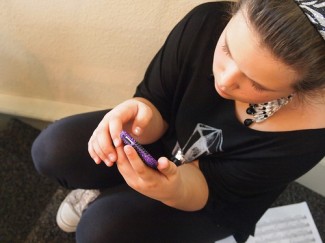 Self-Awareness is an important part of many games and technologies. There are an increasing number of video games that involve Self-Awareness and interpersonal relationships. Games such as The Sims require individuals to take on a persona (known as an avatar) and use it to interact with others in a “human” environment. Other games provide feedback from individuals who are participating in the game, such as Rollercoaster Tycoon, in which customers report their likes and dislikes to park managers. A number of games provide opportunities for playing with peers or siblings that require cooperation and communication in order to be successful in the game play. Increasingly, online multi-player games require communication and anticipation of other people’s actions. Many online games require one to create an avatar to represent the individual in game play. Newer consoles such as the Wii allow individuals to create their own personae with a unique set of characteristics and animation that may represent them.
Self-Awareness is an important part of many games and technologies. There are an increasing number of video games that involve Self-Awareness and interpersonal relationships. Games such as The Sims require individuals to take on a persona (known as an avatar) and use it to interact with others in a “human” environment. Other games provide feedback from individuals who are participating in the game, such as Rollercoaster Tycoon, in which customers report their likes and dislikes to park managers. A number of games provide opportunities for playing with peers or siblings that require cooperation and communication in order to be successful in the game play. Increasingly, online multi-player games require communication and anticipation of other people’s actions. Many online games require one to create an avatar to represent the individual in game play. Newer consoles such as the Wii allow individuals to create their own personae with a unique set of characteristics and animation that may represent them.
Metacognition is a common but often unrecognized aspect of game playing and technology use. Children readily report how they are able to think about their step-by-step problem-solving strategies in a game. For example, game playing requires one to perform certain sequences of actions in order to be successful. In many games it is important for players to be able to recognize their current score and how it reflects their performance and capacity within the game. Children are often able to identify their areas of omission and commission in their game play.
There are a number of digital technologies that allow students to connect with each other in and outside of the classroom. For example, using classroom blogging sites can help students connect with peers and become more aware of their own ideas and writing skills. Sites that allow children to organize information according to their interests, like Pandora and Pinterest, provide students with opportunities for self-exploration and can also introduce them to new interests.
Learn more about how game play can help improve Self-Awareness skills.
Check out our classroom guides for information on how to use specific games and digital technologies to teach Self-Awareness skills.
Alternative Learning Concerns & Self-Awareness
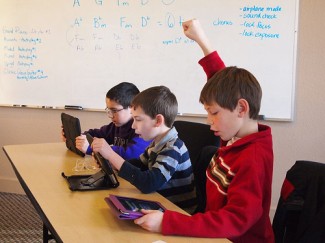 Using Self-Awareness skills can be a struggle for some Alternative Learners. Many of these students need guidance about how to understand their own feelings and thoughts, and to communicate them effectively with teachers and peers. Many students also need instruction on how to monitor their own understanding in a variety of subject areas. Our Classroom Guides provide teachers with ideas on how to integrate digital media into instruction in a meaningful and fun way that can help Alternative Learners build Self-Awareness skills.
Using Self-Awareness skills can be a struggle for some Alternative Learners. Many of these students need guidance about how to understand their own feelings and thoughts, and to communicate them effectively with teachers and peers. Many students also need instruction on how to monitor their own understanding in a variety of subject areas. Our Classroom Guides provide teachers with ideas on how to integrate digital media into instruction in a meaningful and fun way that can help Alternative Learners build Self-Awareness skills.
ASD & Self-Awareness
Students who are diagnosed with Autistic Spectrum Disorders often struggle to understand their own thoughts and feelings, as well as thoughts and feelings of others. They may also have trouble interpreting nonverbal and other social cues from their peers. Similarly, if they are having trouble understanding an academic concept or task, they might have difficulty pinpointing exactly what it is they don’t understand or figuring out a question to ask that would help them. They may also become frustrated when asked to look back at their own work and make corrections or revisions once they feel it is complete.
Many video games and other technologies are available that help build Self-Awareness skills. Students with ASD can benefit from using digital media in the classroom to build these skills because they find many of these games and technologies engaging and motivating. Many games are available that promote appropriate communication and collaboration with others in order to succeed, as well as opportunities to reflect on what can be done differently to get better results.
Anxiety/Depression & Self-Awareness
Using Self-Awareness skills can be a challenge for students diagnosed with anxiety and/or depression. These students may have a difficult time accurately assessing their own strengths and areas for growth. When evaluating their own work, they can be overly critical and view their abilities in a negative way without seeing many positives. These students may also struggle to accept feedback from teachers and peers, often feeling as if they are being attacked or that they are incapable of succeeding.
One reason video games and other digital technologies can be beneficial teaching tools for students with anxiety and/or depression is because they provide students with neutral feedback. When they make a mistake, they can do so without fear of being singled out or criticized. Though many students with anxiety or depression may lack confidence in their academic abilities, these same students often feel very confident when using video games and other digital technologies. This confidence may help them feel comfortable interacting and communicating with their peers while they use the technology together.
Behavioral Problems & Self-Awareness
Students with behavioral problems may also have trouble with Self-Awareness. Sometimes these students struggle to understand how their own behavior impacts those around them. They may also have trouble empathisizing with their peers and showing concern or support when appropriate. Many students with behavioral problems also have trouble identifying and/or coping with their own feelings appropriately, which can lead to disruptive outbursts and poor choices.
Using digital media in the classroom can be a great way for teachers to keep students with behavioral problems learn social skills and awareness. Video games and other digital technologies are available that can help students with behavioral problems practice Self-Awareness skills and can help teach strategies to use to cope with negative feelings and collaborate effectively with peers.
LD & Self-Awareness
Using Self-Awareness skills can also be a challege for many students with Learning Disabilities. These difficulties will vary based on the students’ individual learning profiles. Some students may struggle to interpret nonverbal cues, like facial expressions and body language. Other students may have trouble identifying their own feelings and expressing them appropriately. Others may need to learn coping strategies to help them get back on track when they become frustrated or overwhelmed.
Incorporating digital media in the classroom provides many opportunities for differentiation in order to meet the needs of all students, and to help build Self-Awareness skills. Our Classroom Guides are great tools to use for teachers of students with Learning Disabilities because they are adaptable, meaning teachers can decide how best to use them based on the individual needs of the students.
Educators Guide to the Executive-Functioning Skill of Self-Awareness
Self-Awareness is a skill that is composed of two separate but closely related executive functions: metacognition and social thinking. This thinking skill focuses on the ability of children to judge their performance and behavior and to respond appropriately in different social situations. For example, children would be successfully using their Self-Awareness skills when they noticed that they were talking loudly in the library while other children were trying to work and then adjusted the volume of their voices to a more considerate level.
The two component executive functions of Self-Awareness are defined as:
Metacognition:
Metacognition involves self-monitoring and observation. It is an opportunity for children to check on their efforts and assess their successes and failures. Metacognition is a particularly important function in helping children to gain some perspective on their decision making and skill development. It facilitates taking a bird’s eye view of the impact of one’s actions on others, checking on how one has done. Metacognition implies a degree of thoughtfulness about one’s activities and responsiveness to others in one’s environment and involves asking oneself questions that facilitate defining problems, developing solutions, and assessing successes.
Social thinking:
Social thinking involves the ability to label and describe one’s feelings and to realize the causes of one’s emotional experiences. It helps in the understanding of the needs of others, is important in perspective taking, and holds the key to cooperation in social settings. Social thinking requires the ability to read/understand nonverbal cues and social conventions and express care and concern towards others.
How can I tell if a student is having trouble with Self-Awareness?
These descriptions might help you identify a student struggling with Self- Awareness in the classroom. In general, students who are always unable to understand the impact of their behavior on themselves and others may experience difficulty with Self-Awareness. Students who have difficulty explaining how they approach or solve problems may find it hard to be self-aware. As with all of the Thinking Skills in the Playing Smarter curriculum, struggles with Self-Awareness are likely to co-occur in most students with other areas of weakness in thinking skills.
All Students:
- Having difficulty in explaining rationale in decision making.
- Not using consistent strategies in approaching classroom assignments
- Not employing consistent strategies in approaching problems in the classroom
- Making careless errors in math, spelling, or other assignments
- Displaying carelessness in reading directions and often doing the wrong thing
- Having difficulty learning from mistakes
Particularly Important for Elementary Students:
- Having problems on the playground
- Displaying difficulty in understanding physical boundaries with other students
- Having problems in cooperating in group projects
- Experiencing problems in understanding how behavior impacts upon others
- Having difficulty in clearly expressing feelings
Particularly Important for Middle School Students:
- Displaying problems in unstructured situations in the hallways, gym class, or outside the classroom
- Experiencing difficulty with self-evaluation
- Displaying difficulty in awareness and accepting disabilities in other students
- Tending to stand too closely to others in social situations
- Having conflicts with other students dues to misunderstandings
When do students use Self-Awareness skills at school?
These are common school-based situations where the thinking skill of Self-Awareness is needed. The best way for students to learn the skill of Self-Awareness is to practice it while engaged in daily activities. Take the time to recognize these common situations and when you can encourage your students to employ and improve their Self-Awareness skills.
- When understanding personal strengths and weaknesses in academic subjects, athletics, or other extracurricular activities
- When achieving an awareness of how one’s behavior can impact others
- When following classroom rules
- When checking homework for mistakes
- When understanding why a peer is upset
- When modulating one’s attitude to be appropriate for the setting
- When being a member of a sports team or club
How can I help my students practice their Self-Awareness skills in the classroom?
- Ask the students to try and predict the outcome of a situation. Teach them to think about the different factors and obstacles affecting successful completion of tasks such as an upcoming science project, a soccer game, or a musical performance. Keep track of these predictions in a journal to serve as a direct reminder for the students and to be used for later comparisons. After the activity has been completed, discuss the students’ predictions and identify possible reasons for any inaccuracies.
- Jointly draft, develop, and modify classroom rules. Encourage the students to practice metacognitive skills by considering the reasoning behind current classroom rules and expectations. As the students develop awareness and understanding of the rationale for a particular set of rules and expectations, you could help them to work towards requesting reasonable adaptations and modifications to them.
- Point out verbal and nonverbal cues in social situations that help the students better identify these cues. This could be done by observing a social situation. For example, sitting on a bench at the playground during recess would allow you and the students to compare your observations of interactions among a specified group of children. Gradually have the students become the sole reporters of the social interactions they observe and challenge them to point out specific behaviors, physical actions, facial expressions, and verbalizations to substantiate their hypotheses.
- Practice and explain basic social skills in real-life situations. For example, teach the students to repeat the name of someone they have just met while saying hello: “Sarah, it’s nice to meet you.” Help them to focus on one or two main themes that might be present in the conversation to enhance listening skills. For instance, after listening to a conversation about the baseball season, state, “So, John, you think that the Red Sox will be an even better team next year?” Encourage the students to try and identify a shared interest they might use in a conversation with a speaker.
- Practice complimenting others and being positive. This is an important skill that can help the students in getting along with others because it encourages others and often increases one’s likeability. Model this behavior and praise the students when they make an effort to compliment someone.
What tips can I give my students to help them improve their Self- Awareness skills?
- Estimate how long you think something will take you to do and how well you will do with it. See how accurate you were once the task is completed.
- Make a list of your own view of your personal strengths and weaknesses. Ask someone who knows you well, such as a good friend or your parent, to do the same, then compare the lists.
- Practice listening. Sometimes repeat or reword what you heard to the other person.
- Pay attention to people’s tone of voice and their facial expressions.
- Remember to think about your friend’s interests and try to notice things that you both enjoy.
Classroom Guides for Self-Awareness
[post_grid id=”95982″]




